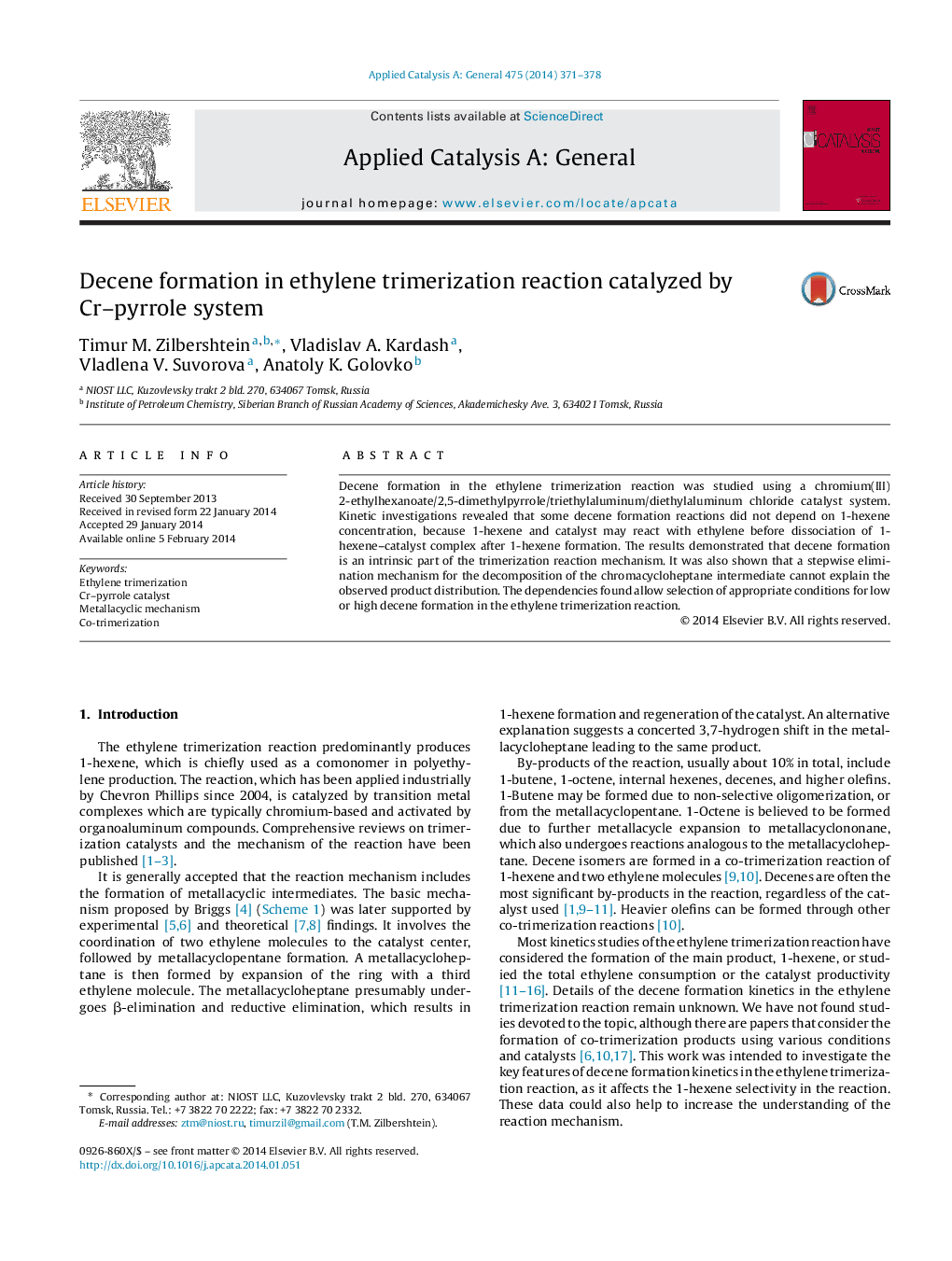| Article ID | Journal | Published Year | Pages | File Type |
|---|---|---|---|---|
| 39855 | Applied Catalysis A: General | 2014 | 8 Pages |
•Isomeric decenes were formed in accordance with metallacyclic mechanism.•There are hexene-dependent and hexene-independent decene formation pathways.•Hexene-independent pathways seem to start before 1-hexene release from the catalyst.•The stepwise elimination mechanism is inconsistent with the product distribution.
Decene formation in the ethylene trimerization reaction was studied using a chromium(III) 2-ethylhexanoate/2,5-dimethylpyrrole/triethylaluminum/diethylaluminum chloride catalyst system. Kinetic investigations revealed that some decene formation reactions did not depend on 1-hexene concentration, because 1-hexene and catalyst may react with ethylene before dissociation of 1-hexene–catalyst complex after 1-hexene formation. The results demonstrated that decene formation is an intrinsic part of the trimerization reaction mechanism. It was also shown that a stepwise elimination mechanism for the decomposition of the chromacycloheptane intermediate cannot explain the observed product distribution. The dependencies found allow selection of appropriate conditions for low or high decene formation in the ethylene trimerization reaction.
Graphical abstractFigure optionsDownload full-size imageDownload high-quality image (117 K)Download as PowerPoint slide
